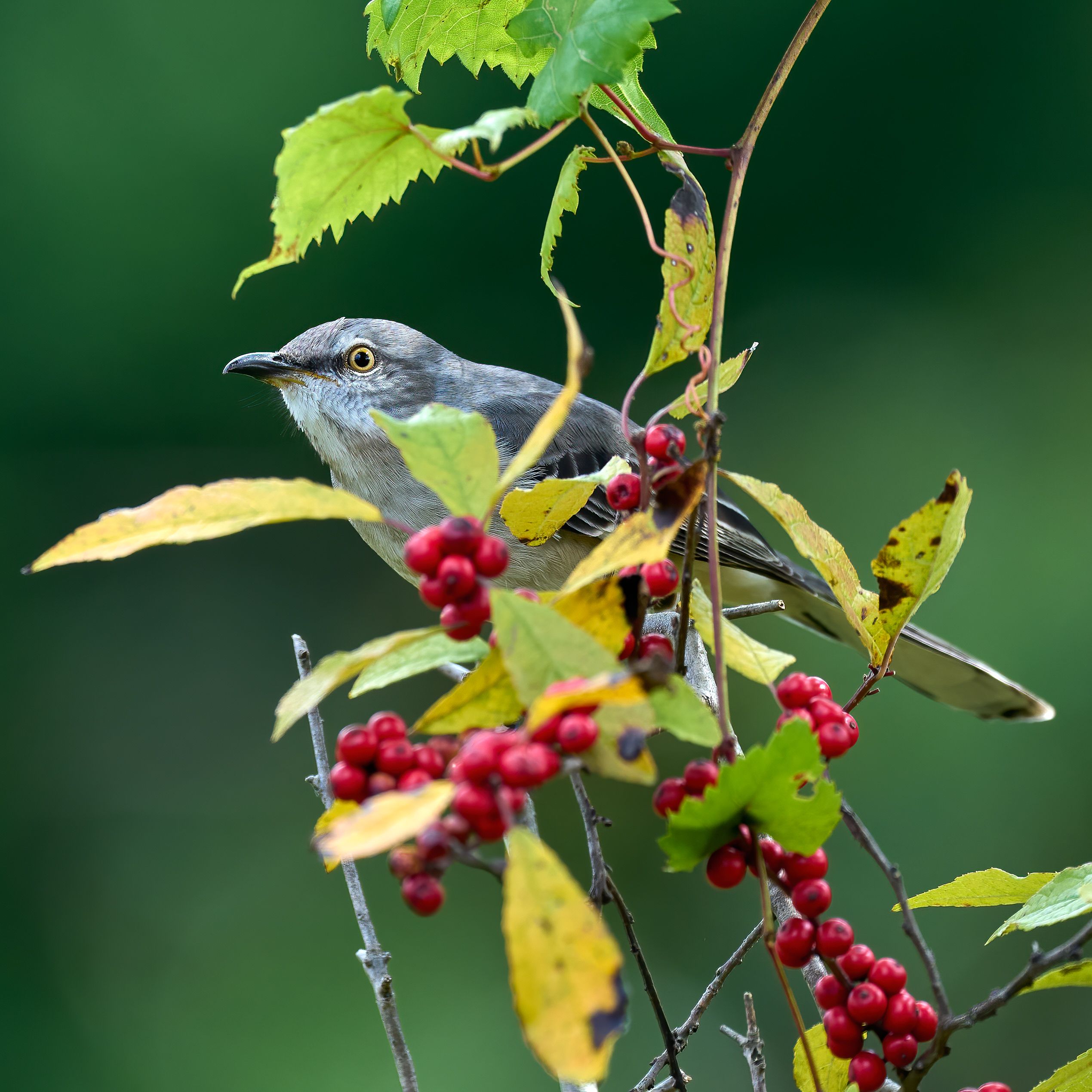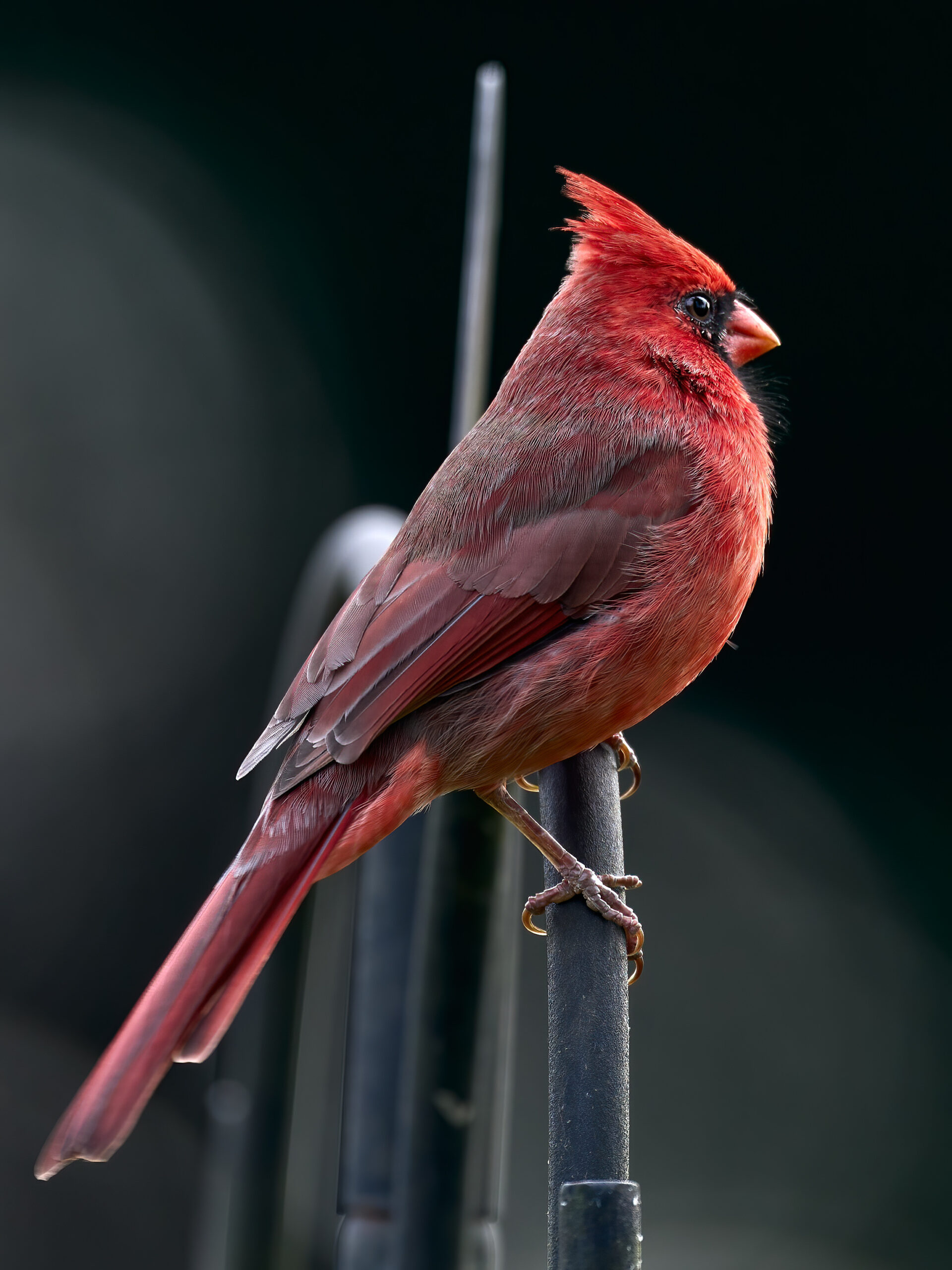
In every garden or park, there’s one bird that stands out not for its bright colors but for its boldness and remarkable mimicry: the Northern Mockingbird. While other birds sing one tune, the mockingbird is a master of many, often borrowing the songs of others and even mimicking non-avian sounds. This remarkable bird’s talents go beyond mere mimicry, as its fearless personality makes it a standout in any environment.
A Bird with a Bold Personality
The Northern Mockingbird isn’t shy. In fact, it’s known for being one of the boldest birds in your yard. Whether it’s standing its ground against larger birds or swooping down to scare off potential threats, this bird doesn’t back down easily. Their territorial nature is particularly evident during the breeding season when both males and females fiercely defend their nests. If you’ve ever been dive-bombed by a bird in your garden, there’s a good chance it was a mockingbird.
In this photo, you can see the mockingbird perched among red berries, eyes sharp and alert. It’s as if the bird is ready for its next performance, whether that’s singing its mimicked tunes or making sure no intruders cross its territory.
The Mockingbird’s Vocal Repertoire
If you’re lucky enough to have a Northern Mockingbird nearby, you’ve likely heard its impressive vocal displays. These birds are capable of imitating the calls of over 50 species, as well as sounds from the environment like dogs barking or car alarms. Males sing more frequently, especially during mating season, where their song helps them establish territory and attract a mate.
Mockingbirds are particularly vocal during the evening hours. You might find yourself serenaded by one late into the night, especially during warmer months. Their song is not only beautiful but also varied, with repeated phrases that showcase their ability to mimic almost anything they hear.
How to Attract Northern Mockingbirds to Your Yard
While Northern Mockingbirds don’t visit seed feeders as often as other birds, there are still ways to invite them to your yard:
- Berries and Fruit: Planting berry-producing shrubs like holly, elderberry, or mulberry can entice mockingbirds to visit your garden. In the fall and winter, when food sources are scarcer, they rely heavily on these fruits.
- Water Sources: Like many birds, mockingbirds appreciate a fresh water source. A birdbath or fountain can be a great way to attract them.
- Open Spaces with Perches: Mockingbirds prefer open areas where they can easily spot potential threats or intruders. Having open spaces with nearby trees or tall shrubs for perching will make your yard more inviting.
A Perfect Subject for Photography
Photographing the Northern Mockingbird can be both exciting and challenging. They are active birds, often darting between perches or scouring the ground for food. Capturing them requires patience and timing. In the photo above, the mockingbird perches among vibrant red berries, creating a striking contrast against its soft gray feathers.
When photographing birds like the mockingbird, it’s important to observe their behavior. Mockingbirds are creatures of habit and tend to return to the same perches. By watching closely, you can anticipate their movements and capture a shot just like this one.
Mockingbirds may not have the bright colors of a cardinal or the size of a hawk, but their personality, boldness, and incredible vocal range make them a true treasure of the backyard. Whether you’re listening to their varied songs or watching them fearlessly defend their territory, the Northern Mockingbird never fails to entertain.
Want to learn more about Northern Mockingbirds and how to photograph them? Explore my blog for tips on birdwatching and photography techniques.


